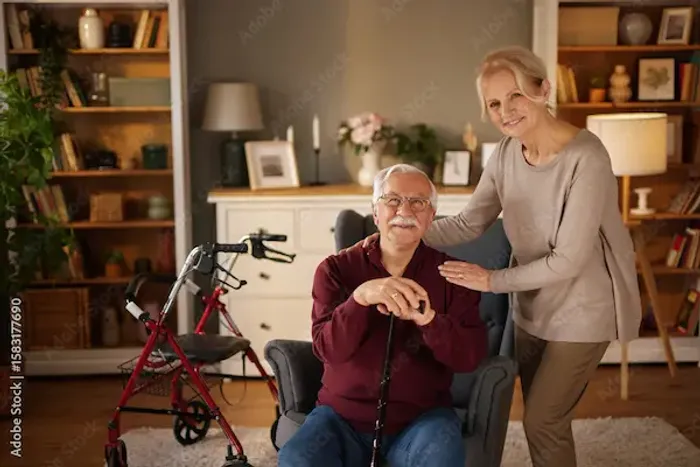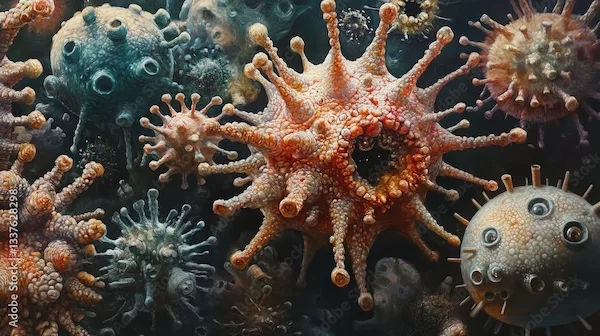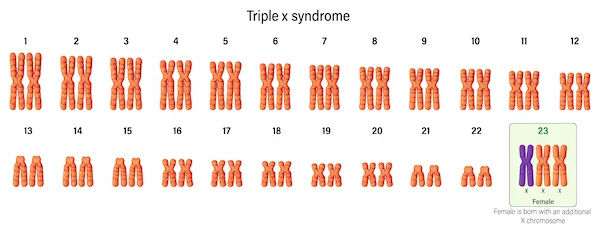Guide to Living Donors Bring Ray Hope Patients
What is a living donor, why is it important, who can be a living donor, types, benefits, risks, journey of a donor, life after donation, costs, and legal considerations and more.

Written by Dr. Md Yusuf Shareef
Reviewed by Dr. Shaik Abdul Kalam MD (Physician)
Last updated on 21st Oct, 2025

Introduction
When time is running out and a transplant waitlist seems endless, living donors can be a true ray of hope for patients and their families. Whether it’s a kidney, a portion of the liver, bone marrow, or even a paired donation in a transplant chain, living donation can shorten wait times, improve outcomes, and add years of healthy life. This comprehensive guide explains how living donation works, who can donate, the benefits and risks, and the step-by-step process from evaluation through recovery. If you’ve ever wondered how donors bring a ray of hope to patients or you’re considering donation yourself, this resource is designed to give you clarity, confidence, and a practical path forward. Along the way, we’ll address common myths, offer expert tips, and share where to get medical advice, lab tests, and support, so you can make a decision that’s both informed and compassionate.
What Is Living Donation and Why Does It Matter
Living donation means a healthy person donates an organ (or part of one) to someone in need. The most common is living kidney donation, because we are born with two kidneys and most people can live well with one. Partial liver donation is also possible; the liver can regenerate to near-full size within months in both donor and recipient. In rare cases, a lobe of lung or intestine may be donated under specific circumstances at specialised centres. Living donation can dramatically reduce waiting time, increase transplant availability, and improve outcomes compared with deceased donor organs, especially for kidneys. Multiple national registries show that recipients of living-donor kidneys often have better graft longevity and patient survival than those receiving deceased-donor kidneys (UNOS/OPTN; NKF).
Types of Living Donation: Kidney, Liver, and Beyond
The kidneys and liver comprise the vast majority of living donations. Some centres also evaluate for uterus transplantation (still emerging) and select cases of lung or intestine donation. Policies and availability vary by country and centre. Always consult an accredited transplant centre for up-to-date options [2,4].
How Living Donors Bring a Ray of Hope to Patients on Waitlists?
Waitlists can be long; thousands wait each year for kidneys alone. A suitable living donor can bypass years of waiting, preempt dialysis, and allow surgery when the patient is healthiest. Donor chains and paired exchanges magnify this effect by linking incompatible donor-recipient pairs into multiple matches, multiplying that ray of hope across several families [1,6].
Global Need vs Availability: The Numbers
In many countries, demand outpaces supply. In the U.S., living donors account for a significant proportion of kidney transplants annually, with strong outcomes; similar programs exist in the UK and globally, under WHO ethical guidelines. This gap between need and availability is exactly why living donation changes lives.
Who Can Be a Living Donor?
Anyone considering donation must undergo a comprehensive evaluation to protect donor safety and ensure the recipient’s best chance of success. Generally, donors are 18–70 years old, in good physical and mental health, and free of serious, untreated conditions like active cancer or uncontrolled hypertension. Criteria vary by organ and centre.
Medical Eligibility and Basic Criteria
Donors typically undergo: detailed medical history, physical exams, blood and urine tests (checking kidney function, liver enzymes, infectious diseases), imaging (CT/MRI, ultrasound), and sometimes cardiac testing. Kidney donors need robust kidney function and normal anatomy; liver donors need sufficient liver volume and healthy tissue. Some conditions for e.g., well-controlled hypertension in older donors) may be acceptable; others (diabetes with complications) often are not.
Psychosocial Readiness and Support Systems
Independent psychosocial evaluation confirms voluntary choice, assesses for undue pressure, and explores mental health history and sources of stress. Donors benefit from a stable support system for time off work, transportation, and recovery. Many centres provide an Independent Living Donor Advocate (ILDA) to protect donor interests.
Age, BMI, Blood Type, and Other Practical Considerations
Centres consider BMI to reduce surgical risk; many aim for a BMI <30–35 for kidney donors. Blood type compatibility is ideal, but with paired exchange or desensitisation protocols, some incompatible pairs can still proceed. Nicotine cessation is commonly required. For women, family planning discussions are important; pregnancy is usually safe after recovery, but is best planned with the care team.
Benefits and Risks: For Donors and Recipients
The benefits and risks include:
Clinical Outcomes and Survival Benefits
Living donor kidney transplants often last longer and function better than deceased-donor kidneys. Many studies and
registry data show improved graft survival and lower acute rejection rates, particularly when surgery is preemptive (before dialysis). For the liver, recipients of living-donor grafts can avoid the deteriorations that come with waiting, benefiting from earlier timing and careful donor-recipient size matching.
Short- and Long-Term Risks for Donors
Surgery has inherent risks: bleeding, infection, blood clots, and anaesthesia complications. For kidney donors, laparoscopic nephrectomy has low major complication rates; the lifetime risk of end-stage kidney disease increases slightly compared to healthy non-donors, but the absolute risk remains low in well-selected donors. For liver donors, risks are higher than kidney donation due to the complexity of hepatic surgery, including bile leaks and rare mortality estimated in the low-per-thousand range; experienced centres mitigate this through strict criteria and meticulous care. Long-term monitoring is essential to detect any changes in blood pressure, kidney function, or liver enzymes.
Mental Health and Quality of Life After Donation
Most donors report high satisfaction and improved quality of life knowing they helped someone thrive; some experience post-operative blues, anxiety, or financial stress. Early, proactive mental health support and peer connections improve outcomes.
The Living Donation Journey: From Screening to Recovery
The journey of screening to recovery includes:
Step-by-Step Evaluation: Labs, Imaging, and Consults
The evaluation begins with health questionnaires and basic labs, then moves to imaging (CT angiography for kidney anatomy, MRI/CT volumetrics for liver), infectious disease screening, cardiac assessment, and specialist consultations (nephrology/hepatology, surgery, anaesthesia). Psychosocial evaluation and ILDA review confirm informed, voluntary participation. Centres may use risk calculators to project long-term donor health, aligning decisions with donor preferences.
The Surgery and Hospital Stay
Kidney donation is typically laparoscopic with 1–3 days in the hospital; liver donation involves open or hybrid approaches with longer stays (5–7 days, sometimes more). Pain is managed with multimodal regimens, and early ambulation reduces clots and speeds recovery. Recipients are monitored for immediate graft function (kidney recipients may urinate on the table), and for liver recipients, graft perfusion and bile flow are watched closely.
Recovery, Restrictions, and Returning to Work
Kidney donors often return to desk work in 2–4 weeks; liver donors may need 6–12 weeks, depending on the extent of resection and individual recovery. Lifting restrictions (usually <5–10 kg) apply for several weeks. Donors should hydrate well, avoid NSAIDs unless approved, and follow individualised exercise plans. Centres schedule follow-up at 1–2 weeks, 6 months, 1 year, and 2 years; some continue annual checks thereafter. Tip: Plan your “re-entry” calendar with your employer and family before surgery, including a staged return to duties and pre-arranged transportation.
Apollo24|7 can support routine follow-up labs (e.g., creatinine, eGFR, liver function tests) via home collection when appropriately coordinated with your transplant team so results are shared and interpreted correctly.
Costs, Legal, and Ethical Considerations
The considerations include:
What Donors Pay (and Don’t Pay); Insurance and Time Off
In many systems, recipients’ insurance or national health services cover the donor’s medical costs related to evaluation
and surgery. Donors may still face non-medical expenses like travel, lodging, childcare, and lost wages; assistance programs exist through transplant centres, charities, or government schemes (varies by country). Document expenses carefully, and ask your centre about reimbursements.
Laws on Compensation and Non-Commercialisation
Most countries prohibit the sale of organs; ethical frameworks stress altruism, voluntariness, and transparency (WHO guiding principles) [10]. Programs like paired exchange operate within legal bounds by swapping organs between pairs without money changing hands. Altruistic non-directed donation is permitted in many regions with strict safeguards.
Finding a Donor and Matching Options
Directed Donation vs Non-Directed (Altruistic) Donation
Directed donation is from someone who knows the recipient; non-directed donation is to a stranger, often initiating a
donor chain. Both require the same medical and psychosocial clearance.
Paired Exchange and Donor Chains
If a donor and recipient are incompatible, they can join a paired kidney exchange, swapping donors with another incompatible pair. Chains start when an altruistic donor gives to a recipient whose paired donor passes it forward, creating multiple transplants from one act. Large centres report significant gains in transplant numbers via these programs [1,6]. Paired exchange is a powerful ray of hope when blood type or antibodies block a direct match.
Strategies for Public Appeals and Patient Advocacy
Patients sometimes use social media, community networks, and local media to find donors. Best practices: craft a clear story, include medical facts (blood type, compatibility needs), and provide a transplant centre contact—not personal phone numbers. Ensure privacy and avoid pressure tactics. Advocacy groups can guide you and share templates for safe, ethical outreach.
Life After Donation: Protecting the Donor’s Future Health
Follow-Up Care, Labs, and Lifestyle
Donors should maintain annual health checks focusing on blood pressure, kidney function or liver enzymes, cholesterol,
and weight. Heart-healthy eating, regular physical activity, and tobacco avoidance are key. Kidney donors should avoid dehydration and discuss high-intensity sports and NSAID use with their doctors; liver donors should limit alcohol post-recovery as advised.
Fertility, Pregnancy, and Family Planning
Most donors can conceive and carry pregnancies safely after recovery; some studies suggest a small increase in gestational hypertension risk for kidney donors—plan with obstetric and transplant teams. Discuss contraception timing around surgery and recovery [3–5].
Emotional Wellbeing and Peer Support
Even when outcomes are excellent, donors can experience unexpected emotions fatigue, “what-if” thoughts, or pressure to be “the strong one.” Seek peer groups through transplant centres or national organisations. If mood changes persist, consult your clinician. If your condition does not improve after trying these methods, book a physical visit to a doctor with Apollo24|7, especially if counselling or medication might help.
Myths vs Facts About Living Donation
The myths and facts include:
Safety, Longevity, and Everyday Life
- Myth: Donating a kidney shortens your life. Fact: Carefully selected kidney donors have similar life expectancy to
matched non-donors, with a small absolute risk increase for ESRD that remains low in absolute terms. - Myth: Liver doesn’t grow back. Fact: The liver regenerates to near-full size in months; recovery varies, but long-term function in donors is generally excellent under proper follow-up.
Donation, Sports, and Travel
Most donors return to normal activities, including sports and travel, after medical clearance. Contact sports may require
additional caution; hydration and altitude planning help kidney donors. Consult your transplant team for individualised guidance
Safeguards That Protect Donors
It includes:
Independent Living Donor Advocate (ILDA)
The ILDA ensures your voice is heard, free from pressure. They are your dedicated resource for questions and concerns.
Conclusion
Living donation transforms long waits and uncertainty into a timely surgery and a renewed life. For recipients, it means
earlier transplantation, better outcomes, and a path back to family, work, and everyday joys. For donors, it’s a profound
act of generosity—one that demands careful screening, informed consent, and dedicated follow-up to keep risks low and health strong. As you consider this journey, remember that safeguards like the ILDA, transparent information, and national ethical standards exist to protect you. If you’re just beginning, start by discussing your health with a doctor, exploring transplant centre resources, and building a support plan for recovery. Telehealth can make those first steps convenient, and services like Apollo24|7 can assist with preliminary labs as you ready yourself for official evaluation. If you’re ready, take the next step: connect with a transplant program, ask your questions, and discover how your decision could change a life.
More articles from General Medical Consultation
Frequently Asked Questions
1) Is living kidney donation safe in the long term?
For carefully selected donors, long-term outcomes are generally excellent, with a small absolute increase in risk for kidney disease compared with healthy non-donors. Regular follow-up is essential; discuss personalised risks with your centre.
2) How long is the recovery after donating a kidney?
Most donors return to desk work in 2–4 weeks, with activity restrictions for several weeks; timelines vary by individual and job demands. (long-tail: donor recovery time after nephrectomy)
3) What if I want to donate, but I’m incompatible with my loved one?
Consider a paired kidney exchange program or donor chain, which can match you with another recipient and bring a ray of hope to multiple patients. (long-tail: paired kidney exchange program)
4) Do donors have to pay for surgery?
Typically, the recipient’s insurance or national health service covers donor medical costs; donors may need help with travel and lost wages. Ask about assistance programs. (long-tail: living donor costs and insurance)
5) Can I have children after donating?
.Most donors can safely plan pregnancies after recovery; coordinate with your obstetrician and transplant team for individualised guidance. (long-tail: fertility after living donation)




